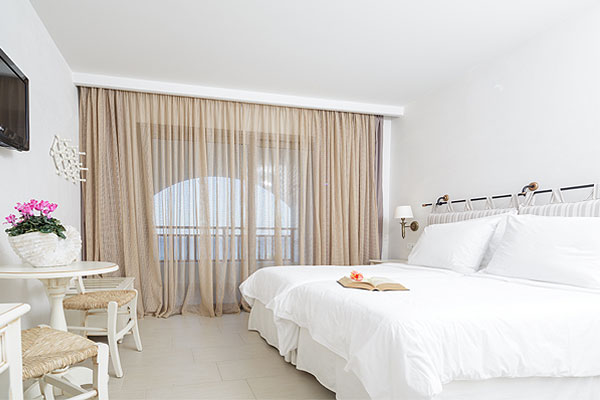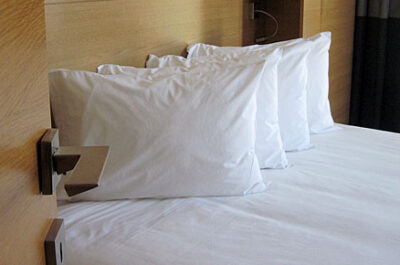Hotels in the Central/South America region reported positive year-over-year results in the three key performance metrics during 2017. Europe’s hotel industry posted solid growth across the three key performance metrics during 2017.
LONDON – Hotels in the Middle East reported negative 2017 performance results, while hotels in Africa posted growth across the three key performance metrics, according to data from STR.
Middle East
- Occupancy: -1.1% to 65.0%
- Average daily rate (ADR): -4.5% to US$164.33
- Revenue per available room (RevPAR): -5.6% to US$106.89
Africa
- Occupancy: +5.6% to 58.0%
- Average daily rate (ADR): +7.4% to US$104.15
- Revenue per available room (RevPAR): +13.4% to US$60.43
- Local currency, 2017 vs. 2016
Kuwait
- Occupancy: +8.8% to 56.7%
- Average daily rate (ADR): -4.7% to KWD62.17
- Revenue per available room (RevPAR): +3.7% to KWD35.23
Demand, up 12.0% in 2017, has continued to grow following the economic downturn caused by lower oil prices. However, room rates have now decreased for three consecutive years. December 2017 represented the first month with year-over-year ADR growth (+8.3%) in Kuwait since July 2016 and was just the fourth positive ADR month for the country since the beginning of 2015.
South Africa
- Occupancy: -0.5% to 64.0%
- Average daily rate (ADR): +3.9% to SAR1,219.07
- Revenue per available room (RevPAR): +3.3% to SAR780.21
According to STR analysts, the weakened South African rand has helped grow the market’s demand over the past two years. However, supply growth has offset the lift in demand, resulting in a slight dip in occupancy levels. Cape Town, specifically, has seen a surge as a tourism destination, with increased flight accessibility from several key source markets. Additionally, the recent expansion to the Cape Town International Convention Centre has helped bring further corporate demand into the market. Looking ahead, Cape Town’s increasing popularity, from both a tourism and corporate demand perspective, may put a damper on hotel business in Johannesburg and Sandton, with more tourists choosing Cape Town as a point of entry to the country over Johannesburg, and more conference and event planners choosing Cape Town’s enhanced convention center.
United Arab Emirates
- Occupancy: +0.5% to 75.1%
- Average daily rate (ADR): -3.8% to AED599.58
- Revenue per available room (RevPAR): -3.3% to AED450.04
STR analysts note that supply growth continues to affect hotel performance in the country, especially with Dubai’s build-up to the 2020 World Expo and beyond. Not only will the amount of new hotel supply continue to influence Dubai’s ADR, the type of new hotel supply entering the market will create a shift in the pricing landscape, with more offerings in the Midscale segment. The market has been historically dominated by the upper-tier hotel classes. Additional offerings in the middle-pricing tiers, however, has helped the market’s demand continue to rise, as a wider price range has made Dubai more accessible at various travel budgets.
Dubai continues to add new tourism attractions to stimulate demand growth, helping the market drive hotel demand as inventory expands. Abu Dhabi is following a similar trend, but at a smaller scale due to a smaller market size. Along with hotel supply developments, the market is adding several new cultural attractions, including the Louvre Abu Dhabi, which opened in November 2017, and additional museums slated to open in the coming years. An expected increase in oil prices, combined with sustained growth in the non-oil sector, should drive economic expansion in Abu Dhabi in 2018, allowing the economy to rebound from relatively flat performance during the previous 12 months. That should be an encouraging signal that the hospitality industry will turn the corner.
Europe 2017 hotel performance
Europe’s hotel industry posted solid growth across the three key performance metrics during 2017.
Europe
- Occupancy: +2.4% to 71.9%
- Average daily rate (ADR): +3.1% to EUR110.51
- Revenue per available room (RevPAR): +5.6% to EUR79.46
- Local currency, 2017 vs. 2016
Netherlands
- Occupancy: +3.9% to 74.3%
- Average daily rate (ADR): +5.3% to EUR117.93
- Revenue per available room (RevPAR): +9.4% to EUR87.57
STR analysts noted that the absolute occupancy level was well above historical averages in the Netherlands. The country’s overall performance growth was driven by its key market, Amsterdam, where occupancy was up 4.1% to 81.5% and ADR grew 6.0% to EUR143.91. A pair of events lifted Amsterdam’s performance in September. The IBC entertainment and technology conference, which drew a record crowd, led to an average occupancy of more than 90% with rate increases ranging between 41% and 67% over a five-day period. The European Photovoltaic Solar Energy and Exhibition (EU PVSEC) also helped push occupancy above 90% on four straight nights near the end of September.
Spain
- Occupancy: +0.7% to 74.6%
- Average daily rate (ADR): +8.0% to EUR114.41
- Revenue per available room (RevPAR): +8.8% to EUR85.29
The country’s occupancy and rate levels were well above long-term averages in Spain. The occupancy growth came even with relatively flat total-year occupancy in Barcelona (-0.1% to 76.7%). Barcelona saw three consecutive months of year-over-year RevPAR declines following the Catalan Independence Referendum. Earlier in the year, performance growth was strong, thanks in part to events such as the Barcelona International Comics Fair (April), European Society of Cardiology Congress (August), International Epilepsy Congress (September) and the Congress for European Society of Organ Transplantation (September). United European Gastroenterology Week (October/November) helped performance after unrest began around the time of the referendum.
United Kingdom
- Occupancy: +0.5% to 77.4%
- Average daily rate (ADR): +3.6% to GBP92.32
- Revenue per available room (RevPAR): +4.1% to GBP71.49
The U.K.’s year-end performance figures were mainly the result of a record-breaking first half, as STR reported in August. Following the results of the June 2016 referendum to leave the European Union, the British pound was devalued considerably against the dollar and the euro. In the short term, this proved to be very positive for U.K. hoteliers, as the favorable exchange rate attracted an influx of international tourists, and provided a boost in domestic tourism as traveling to other countries became less affordable for U.K. residents. Performance figures for the final months of 2017 showed that the “Brexit effect” appears to be waning, as the pound continues to climb back in value. While occupancy levels decreased slightly for seven straight months to end the year, ADR grew year over year in each month of 2017. London hotels posted a 4.1% increase in ADR for the year, with relatively flat occupancy that was heavily affected by strong, continued supply growth. The U.K. capital also showed resilience in the wake of multiple terror attacks in 2017, with minimal impact on hotel performance following each instance.
U.S. hotel industry posts record year in 2017
The U.S. hotel industry registered record-breaking performance levels during 2017, according to data from STR.
Compared with 2016:
- Occupancy: +0.9% to 65.9%
- Average daily rate (ADR): +2.1% to US$126.72
- Revenue per available room (RevPAR): +3.0% to US$83.57
The absolute values in those three key performance metrics were each the highest STR has ever benchmarked. The U.S. hotel industry also set records for supply (roughly 1.87 billion roomnights available) and demand (roughly 1.23 billion roomnights sold). Based on percentage growth for the year, demand (+2.7%) significantly outpaced supply (+1.8%), even though the supply growth figure was the largest for the industry since 2009.
“The industry outperformed projections and reached record-breaking levels across the metrics in 2017,” said Amanda Hite, STR’s president and CEO. “Late-year demand growth, which was no doubt boosted by post-hurricane business in Houston and several major Florida markets, pushed well past a healthy influx of new rooms entering the marketplace. That allowed the industry to end the year well above forecasted levels after seeing more modest rates of growth through the first half of 2017."
“Given the tax cut and the stronger GDP growth that is expected, U.S. hotels are in solid position moving through the next year,” Hite said. “Construction activity is on the decline for the first time since 2011, so even as demand growth subsides, the effects on occupancy and rates should be more manageable for hoteliers.”
Among the Top 25 Markets, Houston, Texas, reported the year’s largest spike in RevPAR (+10.5% to US$71.97), due primarily to the largest increase in occupancy (+7.1% to 66.7%). The market’s performance was lifted late in the year as the effects of Hurricane Harvey filled hotels with displaced residents, relief workers, insurance adjustors and other hurricane-related demand.
Nashville, Tennessee, posted the largest rise in ADR (+6.2% to US$142.82) despite a supply-growth-related decline in occupancy (-0.8% to 74.1%).
Orlando, Florida, reported the only other double-digit jump in RevPAR (+10.0% to US$96.40), due to the second-highest increases in occupancy (+4.9% to 79.3%) and ADR (4.8% to US$121.53).
Overall, 18 of the Top 25 Markets recorded year-over-year RevPAR growth in 2017.
With healthy supply growth ahead of its Super Bowl host year, Minneapolis/St. Paul, Minnesota-Wisconsin, reported the steepest declines in ADR (-2.1% to US$115.89) and RevPAR (-3.6% to US$77.59).
Also affected by supply growth, Dallas, Texas, experienced the largest drop in occupancy (-2.5% to 69.6%).
In absolute values, New York, New York, recorded the highest levels in occupancy (86.7%), ADR (US$255.54) and RevPAR (US$221.60).
Q4 2017
During the fourth quarter of 2017, U.S. hotel occupancy rose 1.8% to 61.7%, ADR was up 2.4% to US$125.34 and RevPAR increased 4.2% to US$77.34.
Among the Top 25 Markets, Houston experienced the largest increases in all three key performance metrics: occupancy (+26.8% to 72.5%), ADR (+11.1% to US$110.06) and RevPAR (+40.9% to US$79.82).
Miami/Hialeah, Florida, posted the quarter’s second-largest rise in each of the three metrics: occupancy (+9.0% to 77.0%), ADR (+6.6% to US$197.82) and RevPAR (+16.3% to US$152.42).
Minneapolis/St. Paul reported the largest decline in RevPAR (-4.3% to US$69.93), due primarily to the largest drop in ADR (-4.0% to US$114.01).
San Francisco/San Mateo, California, experienced the largest decrease in occupancy (-2.9% to 77.8%).
Central/South America 2017 hotel performance
Hotels in the Central/South America region reported positive year-over-year results in the three key performance metrics during 2017.
Central/South America
- Occupancy: +2.2% to 56.5%
- Average daily rate (ADR): +0.7% to US$105.24
- Revenue per available room (RevPAR): +2.8% to US$59.45
- Local currency, 2017 vs. 2016
Argentina
- Occupancy: +9.7% to 62.1%
- Average Daily Rate (ADR): +18.9% to ARS1,938.05
- Revenue per available room (RevPAR): +30.4% to ARS1,203.03
A spike in demand (+9.9%) paired with nearly flat supply (+0.2%) pushed Argentina’s occupancy above 60% for the first time since 2011. Additionally, ADR growth was significant due to inflation, even though the country’s inflation rate was higher for the year. Performance growth was especially pronounced in Buenos Aires: occupancy (+11.2%), ADR (+16.2%) and RevPAR (+29.2%).
Brazil
- Occupancy: +0.5% to 53.1%
- Average Daily Rate (ADR): -12.5% to BRL277.75
- Revenue per available room (RevPAR): -12.1% to BRL147.36
Demand (+3.8%) outpaced continued supply growth (+3.3%) in the country, leading to a slight uptick in occupancy. Significant ADR levels could not be met, however, due to the Summer Olympics comparison from 2016. While RevPAR in Rio de Janeiro dropped 41.6% from 2016 to 2017, other areas of the country began to show recovery from the downturn. Sao Paulo, for example, registered a 3.4% rise in RevPAR.
Colombia
Occupancy: +0.8% to 57.0%
Average Daily Rate (ADR): -0.8% to COP259,151.07
Revenue per available room (RevPAR): flat at COP147,784.05
Despite a 4.0% increase in demand, the country recorded flat performance due to supply growth (+3.1%) limiting occupancy gains and diminishing hotelier pricing power. A similar trend was seen in Bogota, where occupancy rose 5.7%, but ADR fell 4.3%.
Tatiana is the news coordinator for TravelDailyNews Media Network (traveldailynews.gr, traveldailynews.com and traveldailynews.asia). Her role includes monitoring the hundreds of news sources of TravelDailyNews Media Network and skimming the most important according to our strategy.
She holds a Bachelor's degree in Communication & Mass Media from Panteion University of Political & Social Studies of Athens and she has been editor and editor-in-chief in various economic magazines and newspapers.


























































































































































































